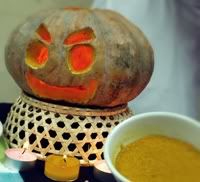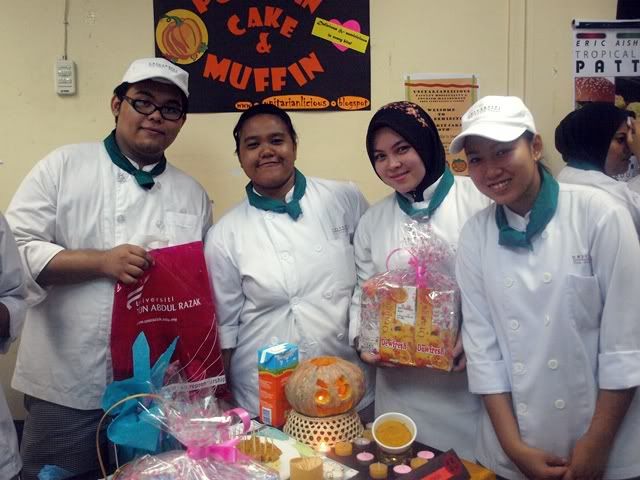Before the task;
On 10th February 2010, Wednesday in kitchen A, Block A, UNITAR. It was our third class and last class for our experimental foods by following the compilation of notes and exercise that have be given to us on our first week of class. On the next class, we are going to start our experimental foods by our own ideas. We started our class with 'Al-Fatihah'. Same as last week, we were given a short briefing about our last experimental food, Fruit Leather. Our task for that day was to experiment with fruit by following the basic formula and procedures.
BASIC FORMULA- FRUIT LEATHER
Ingredients;
- 2 1/2 cup Strawberries, hulled and cut in half
- 25 g Sugar
Method;
- Puree strawberries in blender until smooth. Stir in the sugar.
- Line jelly roll pan with parchment paper and fasten it to the edges with masking tape. Spread the fruit evenly in the pan.
- Dry in oven at 140'F (60'C) until completely dry and no longer sticky (approximately 12 hours).
- Remove from wax paper and roll up. Wrap the roll tightly in aluminum foil and store at room temperature in tightly closed plastic bag or container.
Note; Apple leather can be made using 1 1/2 1b of apples (peeled, cored and pureed), 90ml water, 75g sugar and 0.8g cinnamon.
There are two procedures for fruit leather.
Procedure;
1. Fruit Leather
a. Control--- Prepare the basic formula. Note the time required to dry.
b. Honey, 140'F (60'C) oven--- Prepare basic formula, but substitute 30 ml honey for the sugar. Dry in oven at 140'F. Note the time required to dry.
1. Fruit Leather
a. Control--- Prepare the basic formula. Note the time required to dry.
b. Honey, 140'F (60'C) oven--- Prepare basic formula, but substitute 30 ml honey for the sugar. Dry in oven at 140'F. Note the time required to dry.
All groups were assigned to do procedure 1.(a) and 1.(b) but with different types of fruits. There were five fruits, peach, strawberry, kiwi, apple and dragon fruit. Our group was given peach.
During the task;
After briefing and explanation were done, as usual we did our first step which was to preheat oven and then prepared the ingredients for Fruit Leather. Done with the ingredients, we started our experiment by following the recipe method and the procedure that had been given to us. Two from four of us made fruit leather using sugar while the other two made fruit leather using honey.















*the fruit leather was baked in the oven*
















*the fruit leather was baked in the oven*

This experiment took a long time for the fruit leather to be baked until dry.
After the task;
After the fruit leather was dry, we peeled it from the parchment paper. Then we presented our result to the class. After discussion and comments from our chef, we prepared our records.

As usual, before we ended our class lesson, we cleaned our kitchen and made sure that everything was in a good condition.
Recommendation & Conclusion;
The following chart 12.2.3 shows the result of our experiment.
*CHART 12.2.3 (click pic to enlarge)*














































